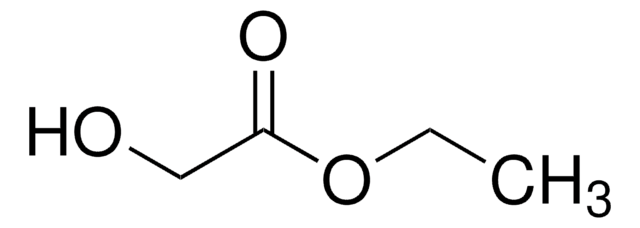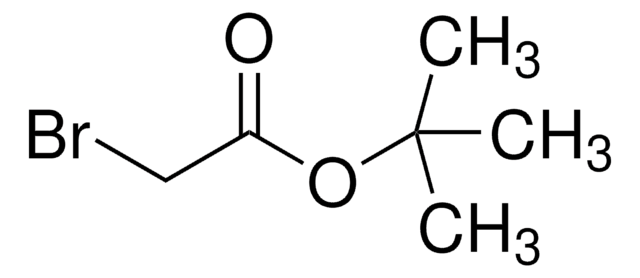All Photos(1)
About This Item
Linear Formula:
HOCH2CO2CH2C6H5
CAS Number:
Molecular Weight:
166.17
MDL number:
UNSPSC Code:
12352100
PubChem Substance ID:
NACRES:
NA.22
Recommended Products
Quality Level
Assay
97%
form
liquid
refractive index
n20/D 1.527 (lit.)
bp
136 °C/14 mmHg (lit.)
density
1.171 g/mL at 25 °C (lit.)
functional group
ester
hydroxyl
phenyl
SMILES string
OCC(=O)OCc1ccccc1
InChI
1S/C9H10O3/c10-6-9(11)12-7-8-4-2-1-3-5-8/h1-5,10H,6-7H2
InChI key
VPYJBEIOKFRWQZ-UHFFFAOYSA-N
Looking for similar products? Visit Product Comparison Guide
General description
Benzyl glycolate is a benzyl ester of glycolic acid.
Application
Benzyl glycolate may be used for the synthesis of the methyl [2-(2′-benzyloxy-2′-oxoethyl)-5-acetamido-4,7,8,9- tetra-O-acetyl-3,5-dideoxy-α- and -β-D-glycero-D-galacto-2-nonulopyranosid]onate. It may be used for the preparation of monosaccharide building blocks. It may also be used for the synthesis of the following new polymeric phosphazenes having pendent esters of glycolic or lactic acid as side units:
- poly[bis(ethyl glycolato)phosphazene]
- poly[bis(ethyl lactato)phosphazene]
- poly[bis(benzyl glycolato)phosphazene]
- poly[bis(benzyl lactato)phosphazene]
Storage Class Code
10 - Combustible liquids
WGK
WGK 3
Flash Point(F)
Not applicable
Flash Point(C)
Not applicable
Personal Protective Equipment
dust mask type N95 (US), Eyeshields, Gloves
Choose from one of the most recent versions:
Already Own This Product?
Find documentation for the products that you have recently purchased in the Document Library.
Chien-Tai Ren et al.
Chemistry (Weinheim an der Bergstrasse, Germany), 9(5), 1085-1095 (2003-02-22)
A facile synthesis of the sialic acid oligomers alpha-(2-->5)Neu5Gc (1) is presented. Monosaccharides 2-4 with suitable functionality were used as the building blocks. After selective removal of the paired carboxyl and amine protecting groups, the fully protected oligomers were assembled
Synthesis of poly (orgnaophosphazenes) with glycolic acid ester and lactic acid ester side groups: Prototypes for new bioerodible polymers.
Allcock HR, et al.
Macromolecules, 27(1), 1-4 (1994)
Chien-Tai Ren et al.
The Journal of organic chemistry, 67(4), 1376-1379 (2002-02-16)
The preparation of a disaccharide 2, Neu5Ac-alpha-(2-->5)Neu5Gc having a alpha-benzyl protecting group at the reducing end, by the coupling of the easily accessible building units 4 and 5 is described. Subsequent deprotection of the coupling adduct led to the isolation
Our team of scientists has experience in all areas of research including Life Science, Material Science, Chemical Synthesis, Chromatography, Analytical and many others.
Contact Technical Service








